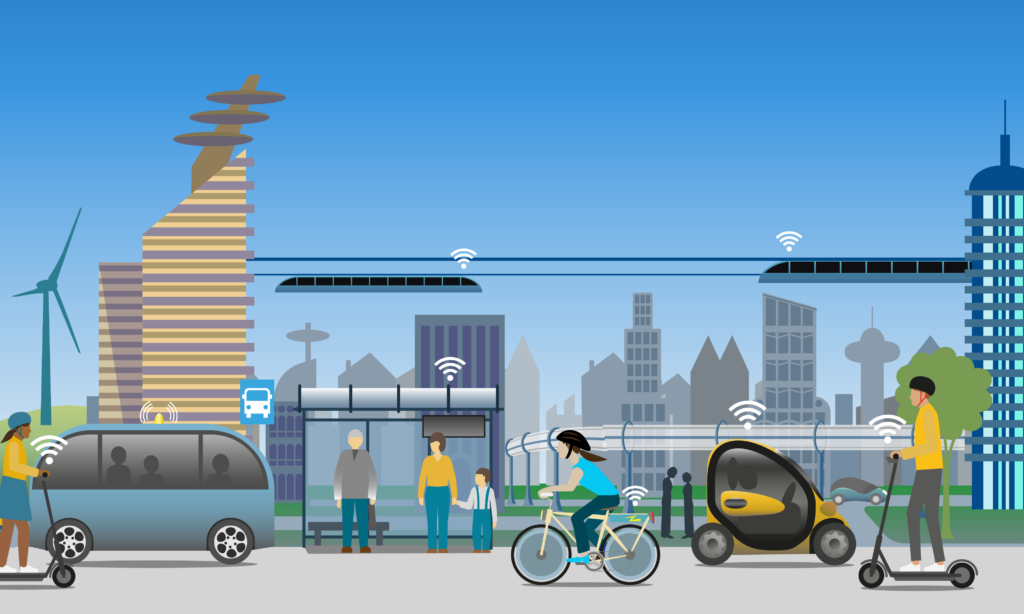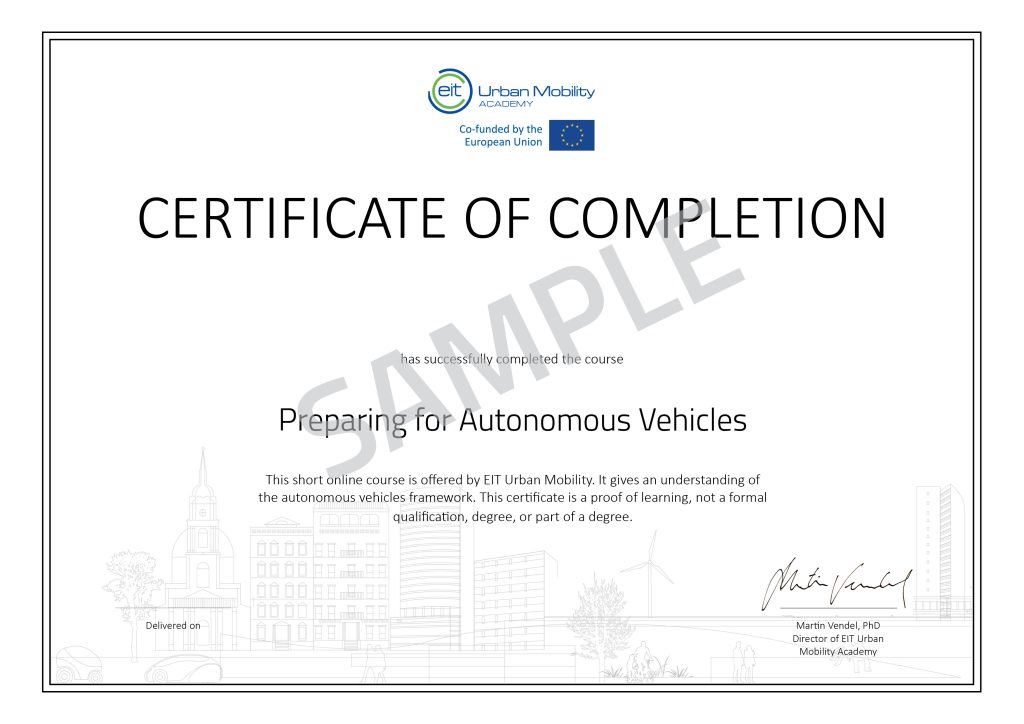Welcome to the EIT Urban Mobility introductory course on autonomous vehicles! This short course will introduce you to the autonomous vehicles’ framework and then delve into the complexities of incorporating them into sustainable urban mobility planning.
Looking at challenges and opportunities of the adoption of autonomous vehicles in cities, this course will:
- Describe the autonomous vehicles framework, its ecosystem and the technology
- Reflect on possible scenarios for autonomous vehicles in cities
- Identify challenges to a sustainable incorporation of autonomous vehicles in urban mobility planning
- Consider the potential of autonomous vehicles for cities and, in particular, shared transportation
Successfully incorporate autonomous vehicles into sustainable urban planning
For sustainable future cities, the way people use and move around urban spaces must be reviewed. The town planning done now will have massive impacts on city dwellers’ quality of life in the years to come. This course will explore how autonomous vehicles should be incorporated into sustainable urban planning. Its people-centred approach helps to ensure the systems are adopted, ultimately creating eco-friendly urban mobility for a greener tomorrow.
Discover the potential of autonomous vehicles
You’ll see what self-driving vehicles are capable of, beyond the hype. The training material will show you how to critically evaluate what the ‘automotive revolution’ promises for future cities and what, based on the technology, we can actually expect.
Let people determine the focus of sustainable transportation
The central idea of this course is that for clean, sustainable transportation systems to be successful, they need to meet people’s needs and be easy to use. Once you’ve understood the potential capabilities of automated vehicles, you’ll get to apply that knowledge to typical town planning challenges. Mobility requirements, general acceptance of new urban planning policies and transport systems, and other key obstacles will be explored.
In this course, you will:
Critique reports and claims related to automated vehicles and other forms of “new mobility”
- Describe human, social and urban factors in planning decision making, in contrast to technical factors
- Reflect on potential second- and third-order impacts of the deployment of autonomous vehicles
- Consider low-car ownership as an enabler of autonomous vehicles development in cities
- Develop a city plan outline, including plan staging, toward your stated end goals
If you want to learn more about this topic, after completing this course you can take the Planning for Autonomous Vehicles: A People-Centred Approach course
Multi-language videos:
To make this course accessible for a greater audience, the videos’ subtitles are available in English, Croatian, French, Italian, Polish, Portuguese, Spanish and Turkish.




